Soil temperature is arguably one of the best guides you can use for deciding when you can still plant in the fall. The fall planting window is much longer than people think, especially for perennial plants.
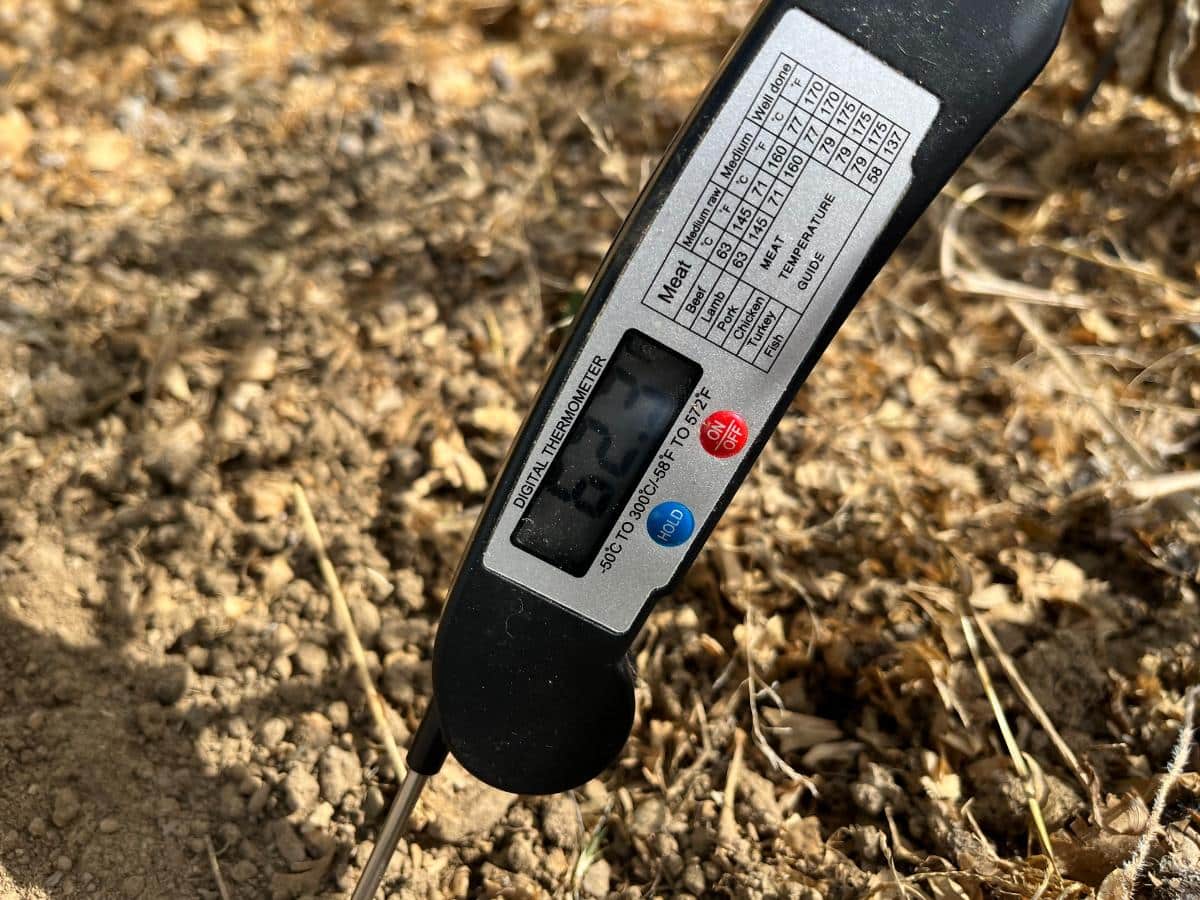
Why should you use soil temperature to guide your fall planting? What are the advantages of using soil temperature? Which plants is soil temperature most useful for?
Jump to:
- Why Use Soil Temperature for Fall Planting
- Smoothing out the bumps of unpredictable local weather
- What Types of Plants Can Soil Temperature Be Used for Planting in the Fall?
- Cole crops and cool-season vegetables grow even in low soil temperatures
- Soil Temperatures for Planting Fall Vegetables
- Perennials thrive in low soil temperatures
- Soil Temperatures for Perennial Plants for Fall Planting
- Be aware of frost-sensitive plants
- Season extenders can help keep hardy vegetables and flowers going longer
- Keep in Mind that Soil Temperatures in the Fall Work in Reverse of the Spring (So there are some planting limits)
Why Use Soil Temperature for Fall Planting
Simply stated, soil temperature is a more stable measure of growing conditions than ambient or air temperature is. The temperature of the air can change in a matter of hours. It takes much longer -- days or weeks -- to see any appreciable change in soil temperature.
While the overall air temperature can change daily (even hourly in some weather), the soil temperature will not move. It takes many days and perhaps weeks of cold weather for a cold to work into the ground.
Smoothing out the bumps of unpredictable local weather
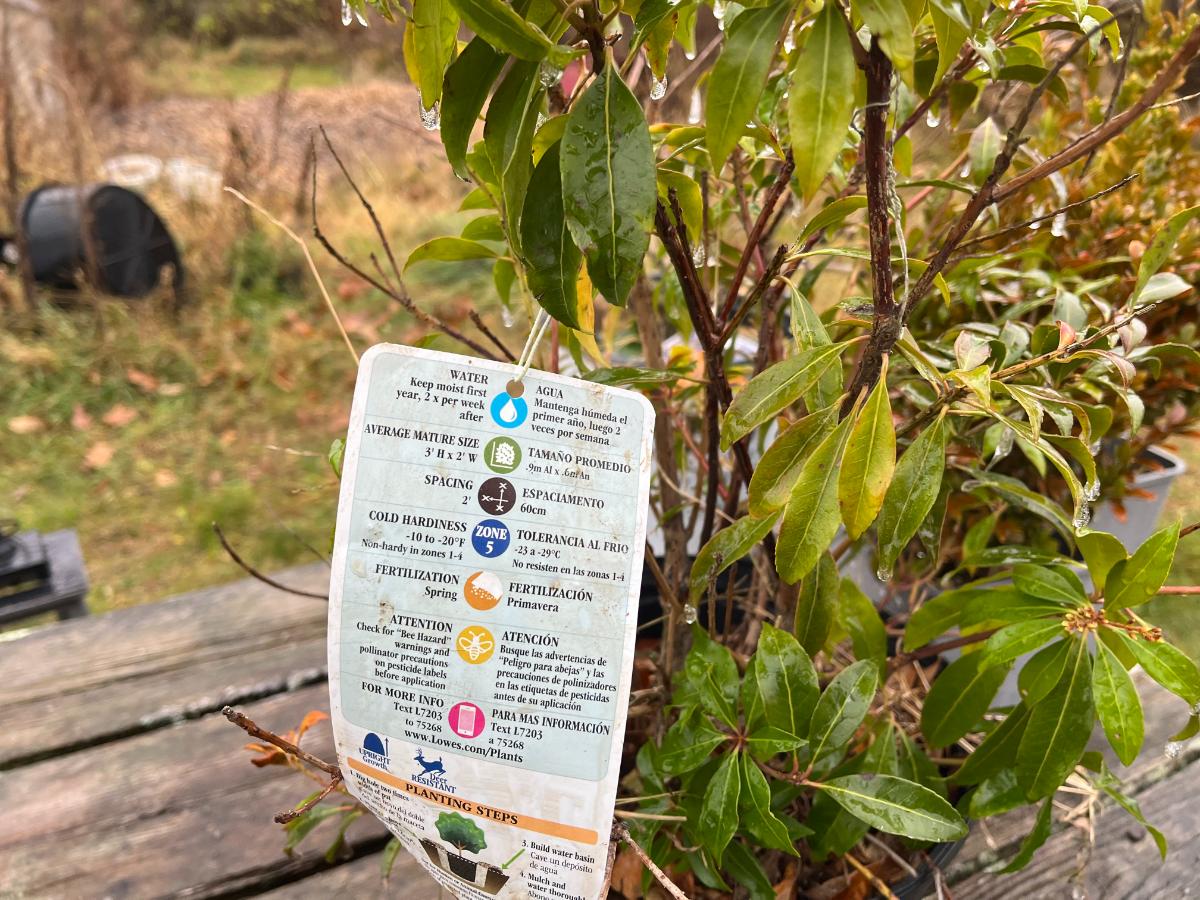
It’s getting harder and harder to rely on the signals we typically use for fall planting, such as weather and frost dates.
Summer weather is staying around longer. Freak storms or dips in air temperature are often followed by stark increases that may stay warm for quite some time to come.
Frost dates were always only estimates -- historical mappings of when the first frost hit, signaling an end to the growing of tender annuals, vegetables, and frost sensitive plants.
The past several years, however, have seen quite a bit of variability in the “normal” frost dates. More often than not, the first frosts have been coming later by many weeks and, in some areas, by months!
It is also common for us to experience a frost or two, and then not see another for a month or more. But a single frosty morning or two is not enough to move the temperature of the soil, or to lower it to a degree that will stop plant growth.
These are some of the factors that are driving the change in averages that have resulted in the change of hardiness zone ratings.
And so, if we use only weather and first frost dates as a guide, we miss out on some of the best planting times of the year, especially for berries and perennial plants.
What Types of Plants Can Soil Temperature Be Used for Planting in the Fall?
Soil temperatures are useful for all types of plants that you might consider planting in the fall.
Cole crops and cool-season vegetables grow even in low soil temperatures
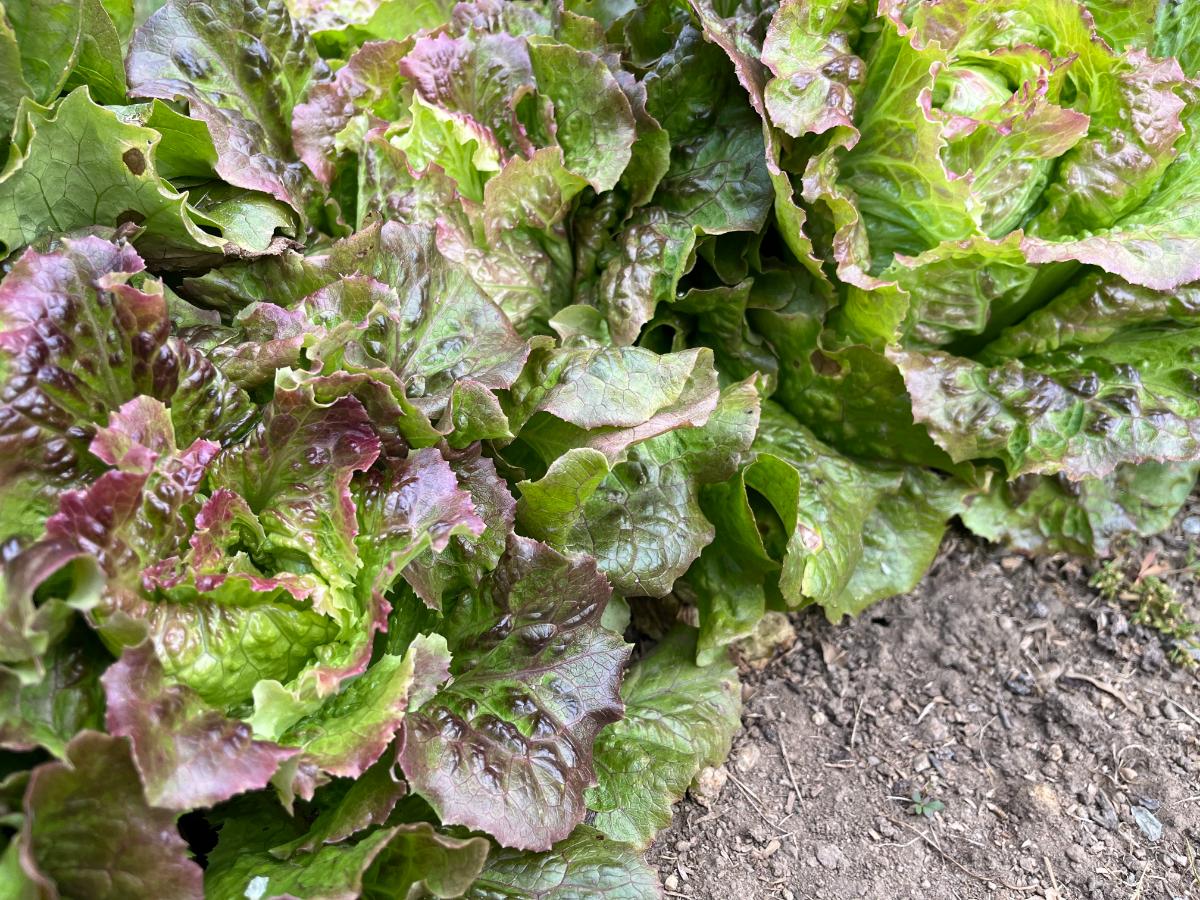
For fall and winter vegetables, it can guide you in planting appropriate cool-season plants and direct seeding.
There are many cool season plants that will grow even in cool soil, including brassicas like cauliflower, broccoli, cabbage, and kale, and others including lettuce, greens, spinach, carrots, beets, turnips, and more.
Soil Temperatures for Planting Fall Vegetables
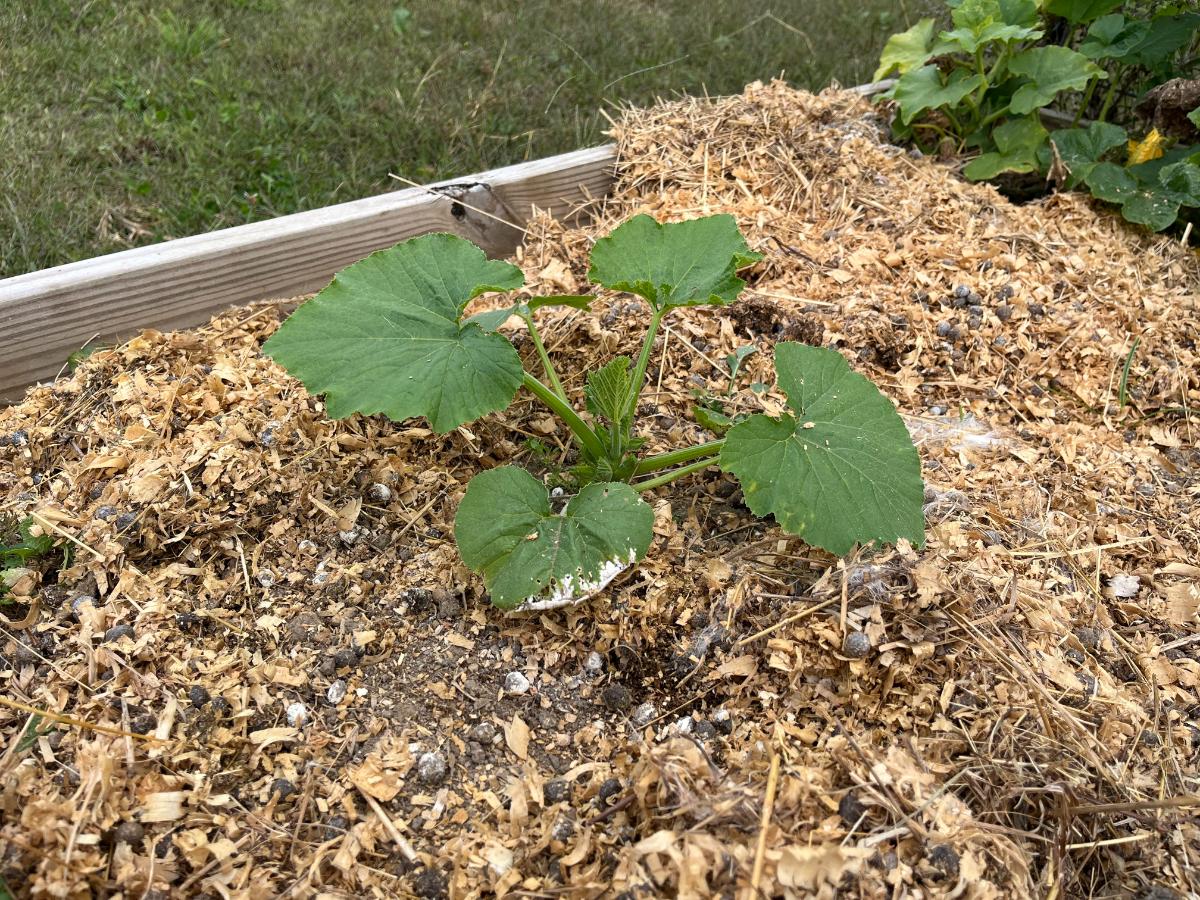
These cool season vegetables are frost hardy and can grow (albeit more slowly) in soil temperatures as low as 40 to 45℉ (4.44 to 7.22℃). Many will grow even in soil temps as low as 35℉, though 45 to 50℉ is the most practical range for fall vegetables.
Of course, for vegetables you’ll need to determine how many days they need to grow to harvest, or if they can be picked at a younger stage (baby spinach or lettuce, for example).
Perennials thrive in low soil temperatures
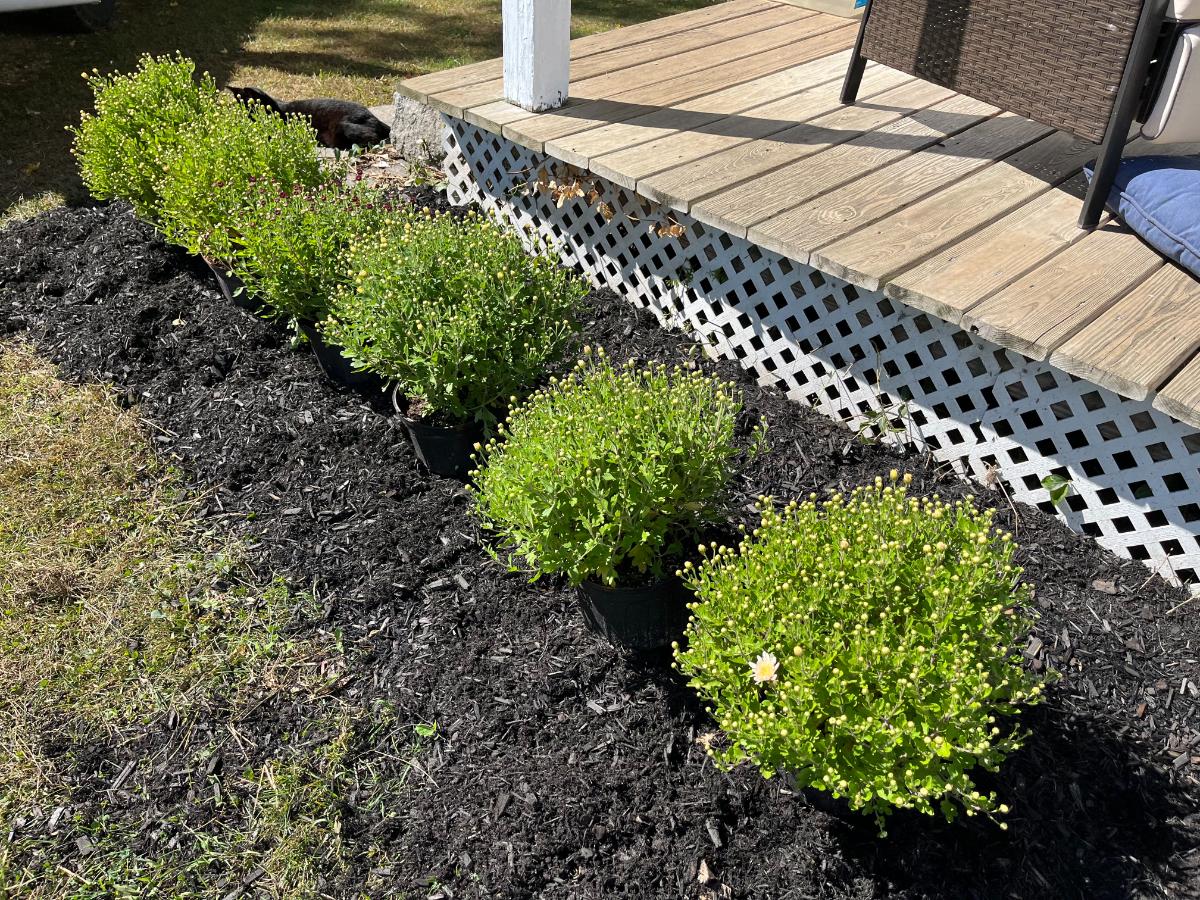
Fall soil temperatures are even more useful for fall-planted perennials.
Fall planting is an excellent option for perennials of all sorts, including edibles, berries, strawberries, trees, and bushes.
With perennials, you don’t need to worry about whether they have enough time to finish for display or harvest. You wouldn’t be expecting a display or harvest in the fall when they’re planted anyway; that would be for next year.
Fall planting can boost many berries and edible perennials ahead by a whole growing season, though, so by planting in the fall you can plan to be picking in the next spring and summer for many edible perennial plants.
Roots grow well in cooler temperatures. Good root growth is the real key to success with perennials for the long term.
So, root growth is what you want. And cool fall soil grows better roots.
Soil Temperatures for Perennial Plants for Fall Planting
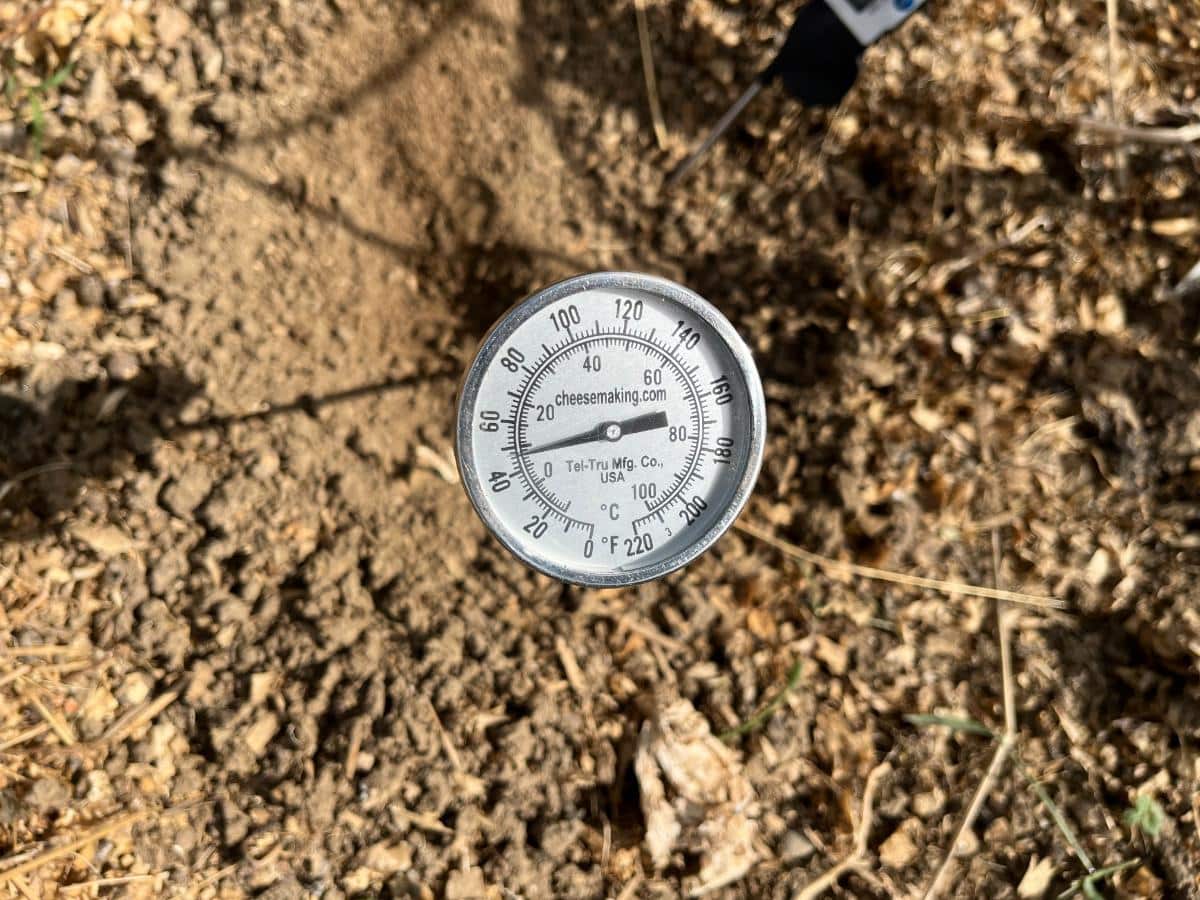
Perennial roots can grow even down to freezing, depending on the plant. A good rule of thumb is that soil temperatures of 40℉ (4.4℃) are good for planting perennials.
Be aware of frost-sensitive plants
Keep frost sensitivity in mind, even if you’re using soil temperature to guide your planting.
Remember that frost-sensitive plants may be able to grow in lower soil temperatures, but they will be killed by freezing air.

Season extenders can help keep hardy vegetables and flowers going longer
Season extenders like cloches, frost fabric, and low tunnels can significantly extend your growing season.
They help you take the best advantage of the steady soil temperatures and overcome this issue of the air temperature being the only reason you can’t grow plants for longer (or issues of overcoming periodic episodes of cold temperatures that rise back up again).
Keep in Mind that Soil Temperatures in the Fall Work in Reverse of the Spring (So there are some planting limits)
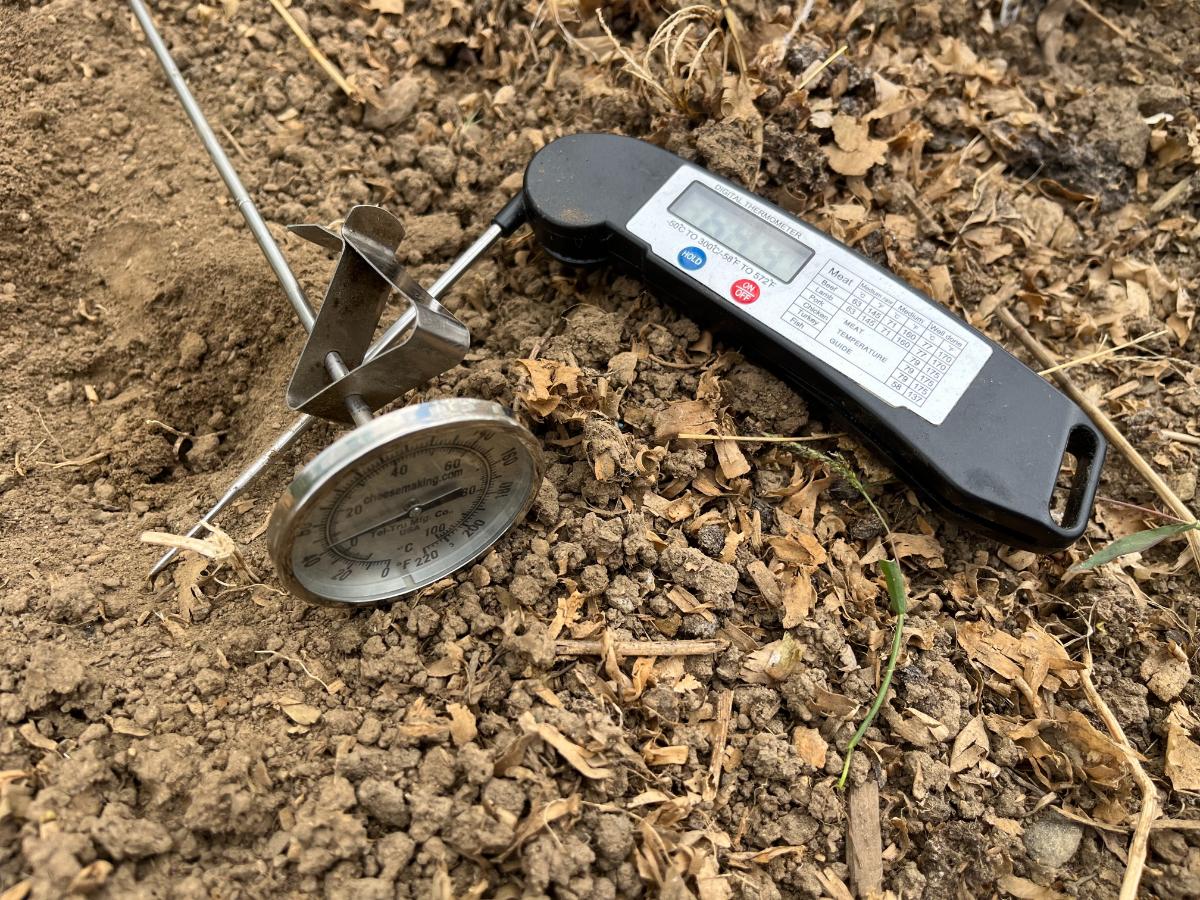
Just keep in mind that soil temperatures will gradually fall, instead of increasing like they do in the spring. So there is some timing and prediction to be considered.
However, soil temperatures will not fall below air temperatures, at least not until the real cold of winter sets in. Once frost sets into the ground, then it will hold on the colder side until air temperatures steadily warm up again.
But, if you know your average air temperatures will hold in the 35 to 40℉ range, you can estimate that your ground temperature should be at least around 40 and you can keep cold season plants going.
With climates changing and locations staying warmer for longer, we can get more out of our growing season. That means more out of our yards and gardens and more good food and lovely ornamental plants to enjoy!
With the weather getting increasingly unpredictable, it’s time for us to adjust and see what we can do differently to make the most of our gardens. Using other tools like soil temperature is one of the best ways to maximize our garden use -- and rewards!

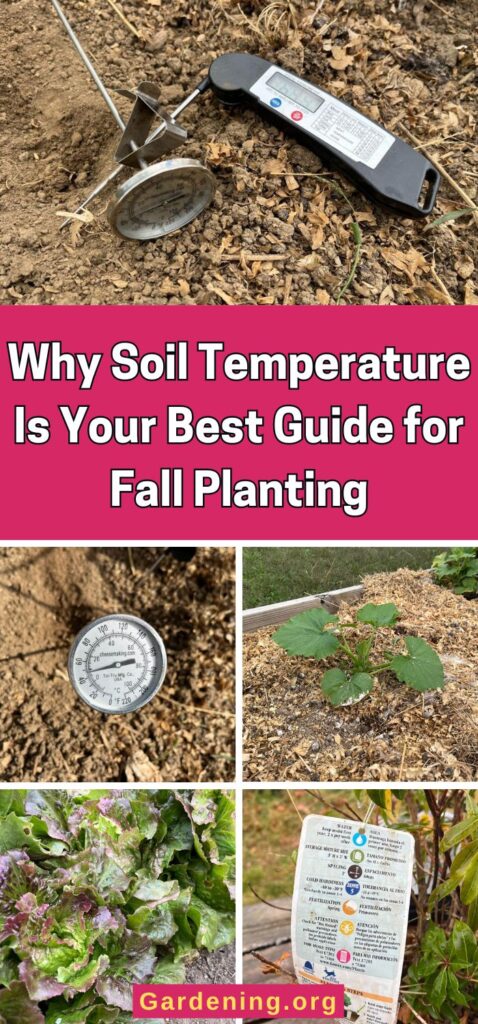
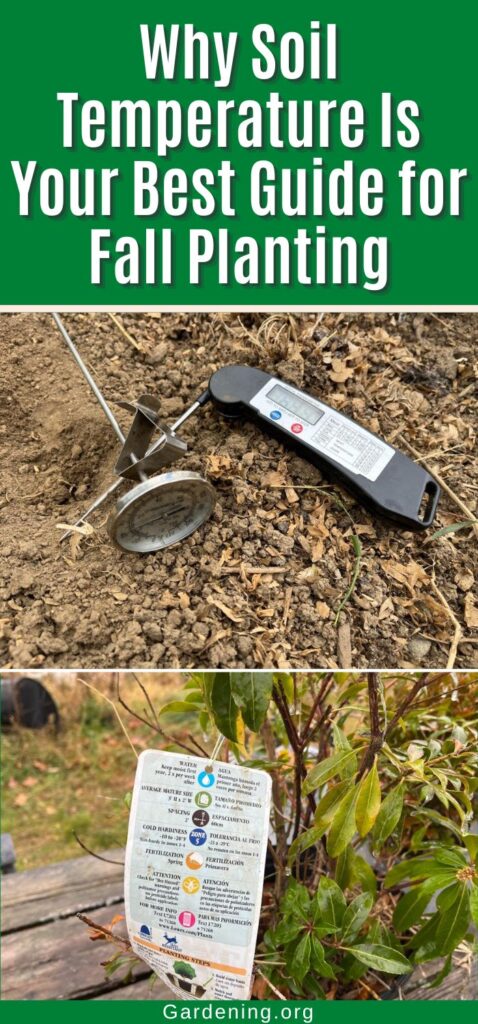
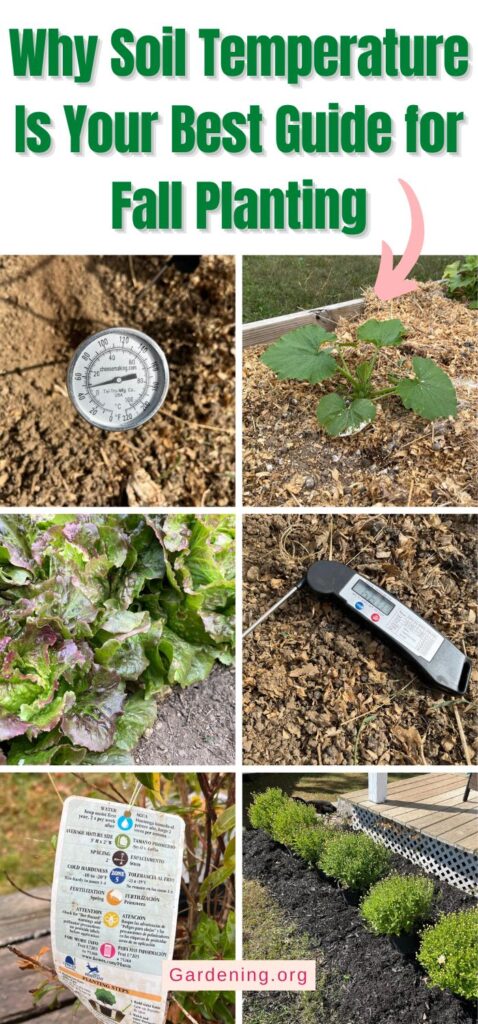
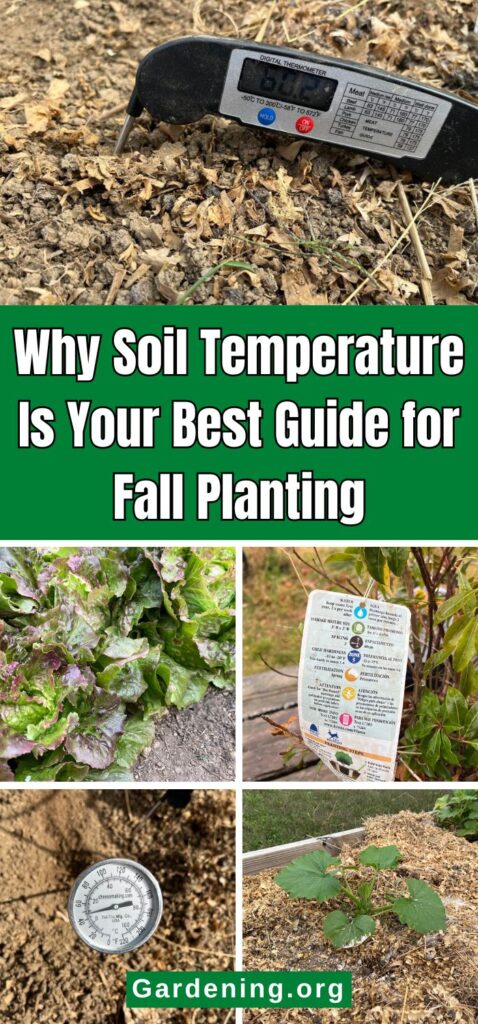




Leave a Reply